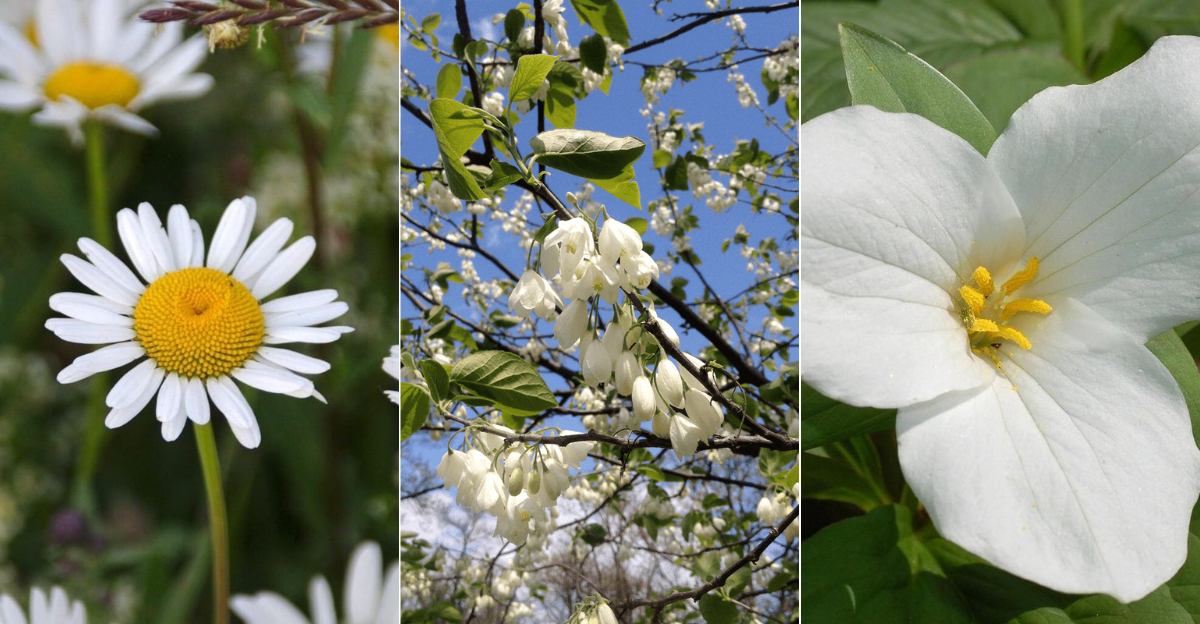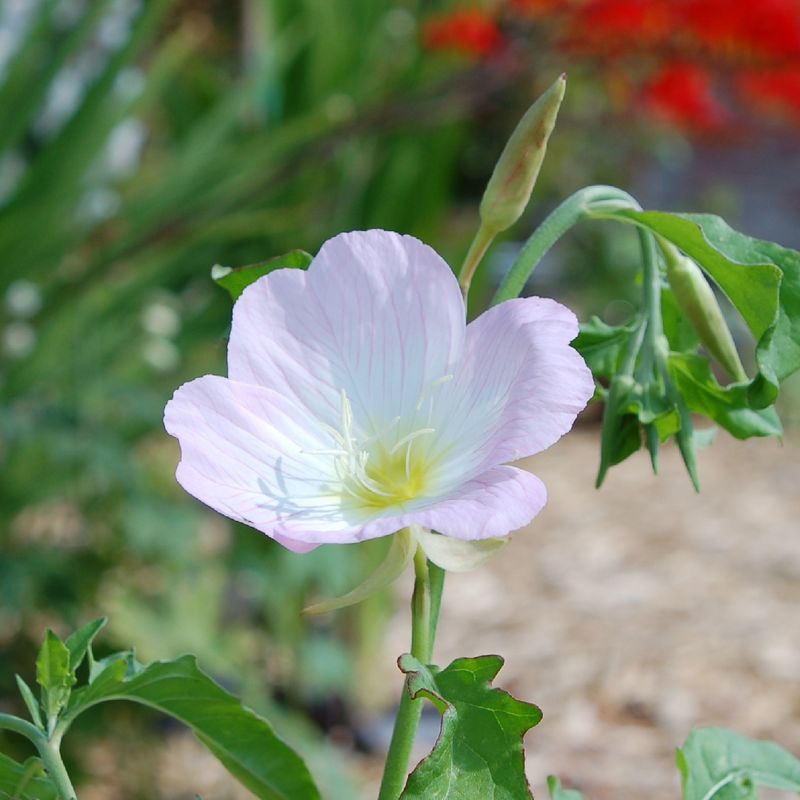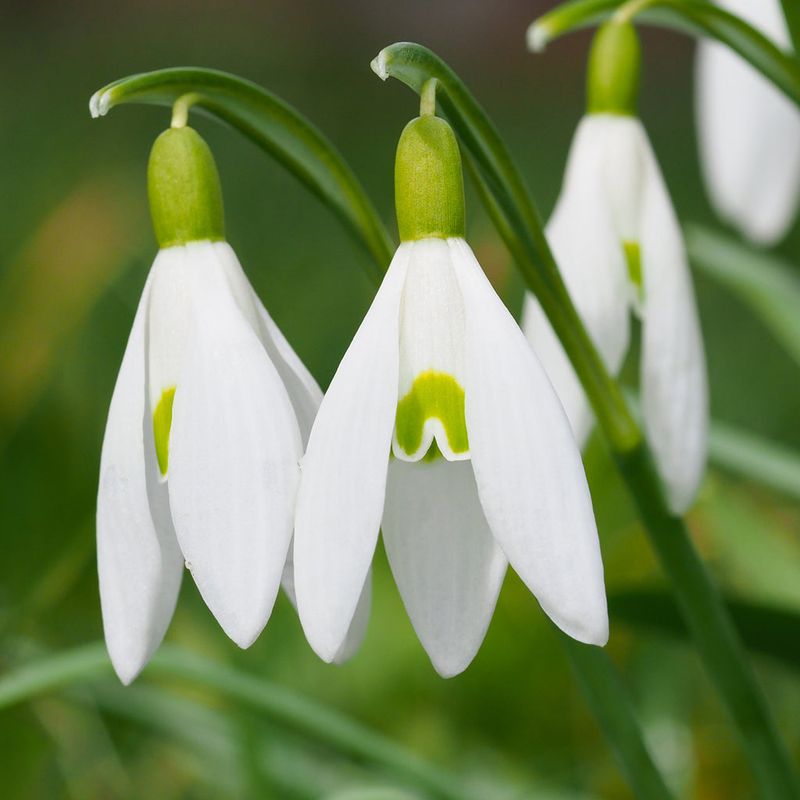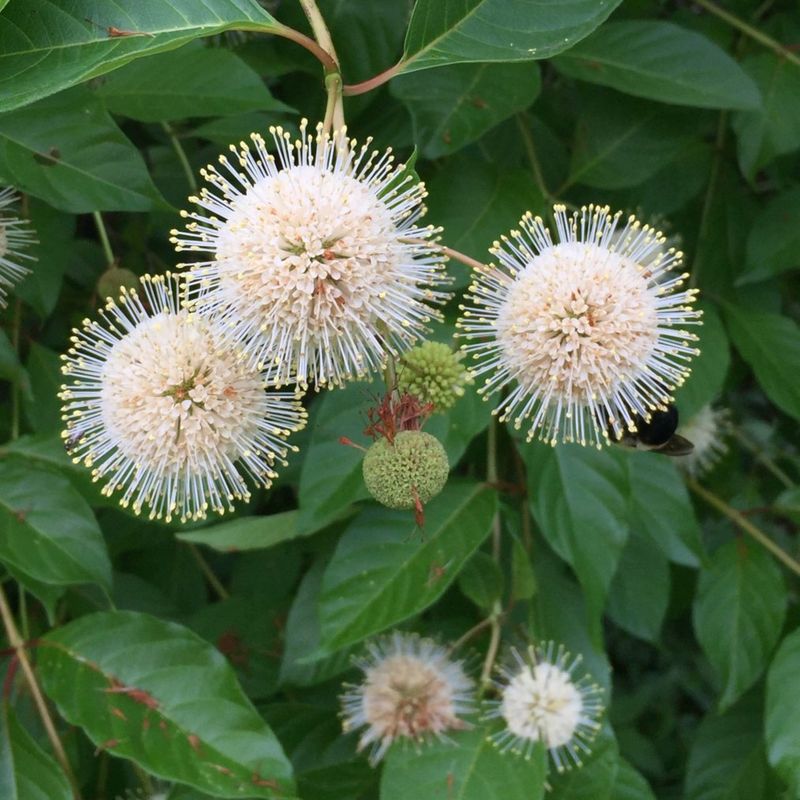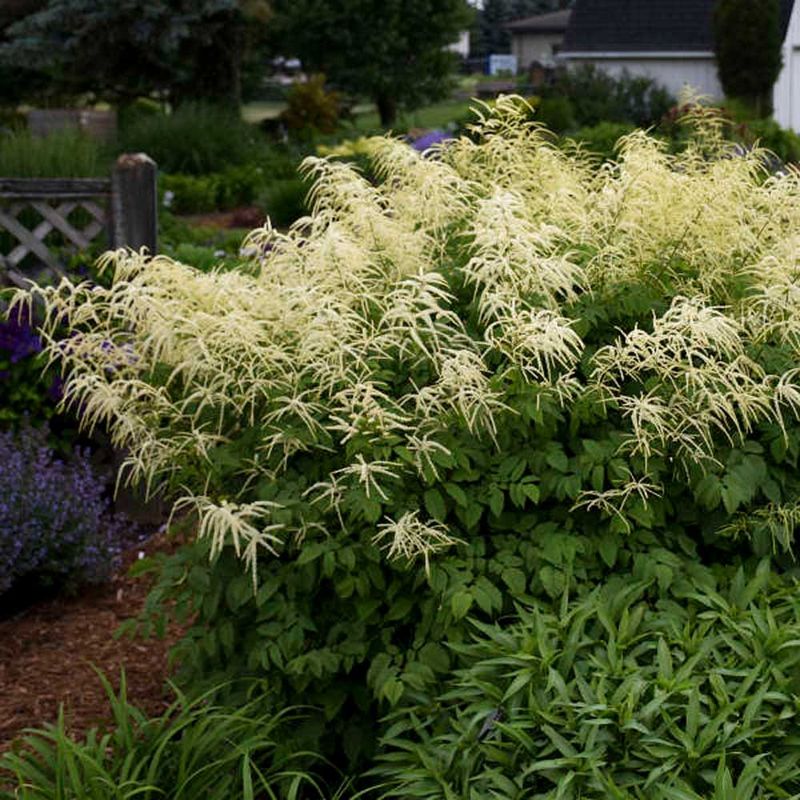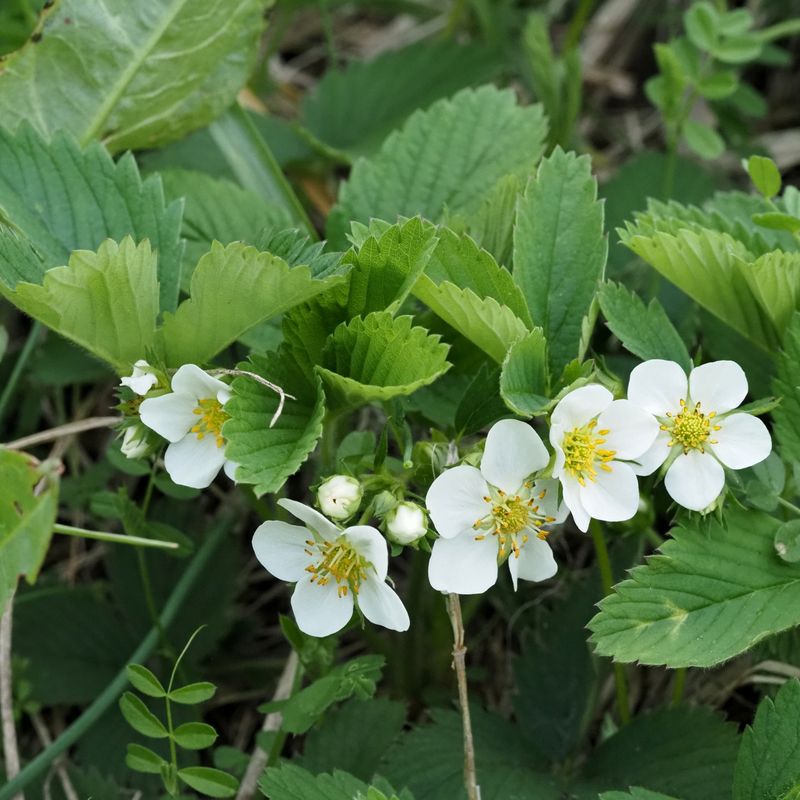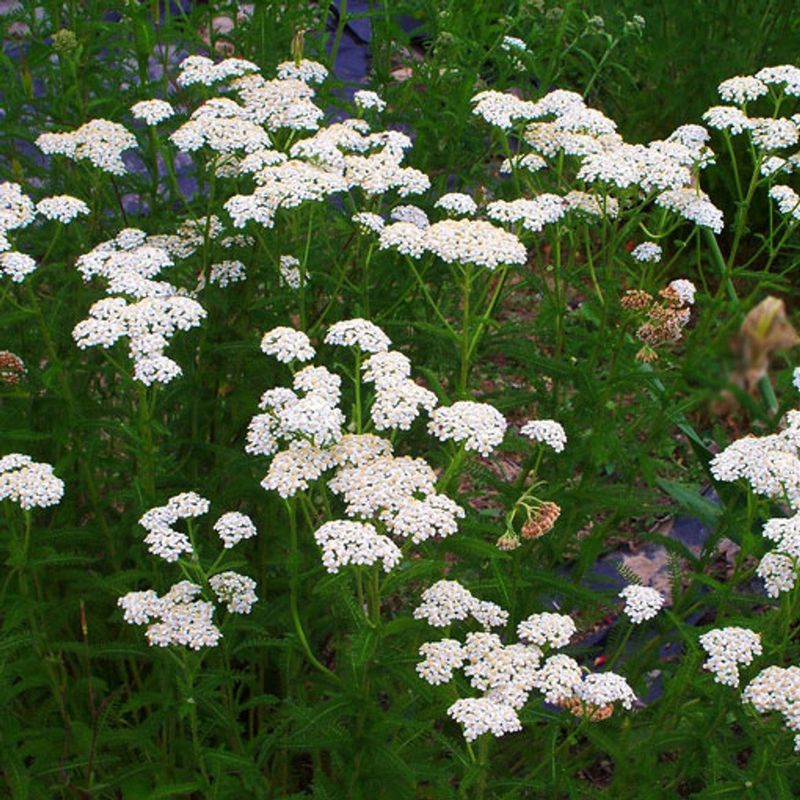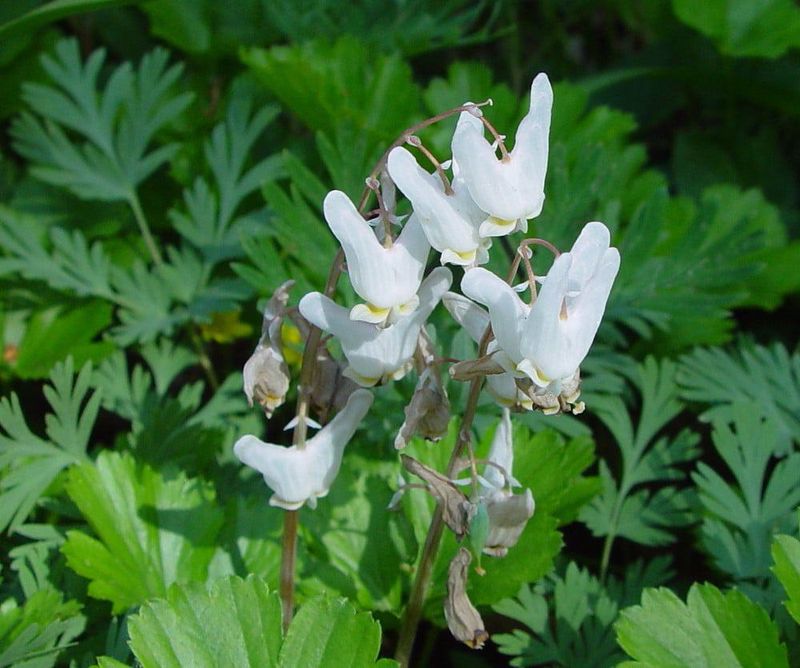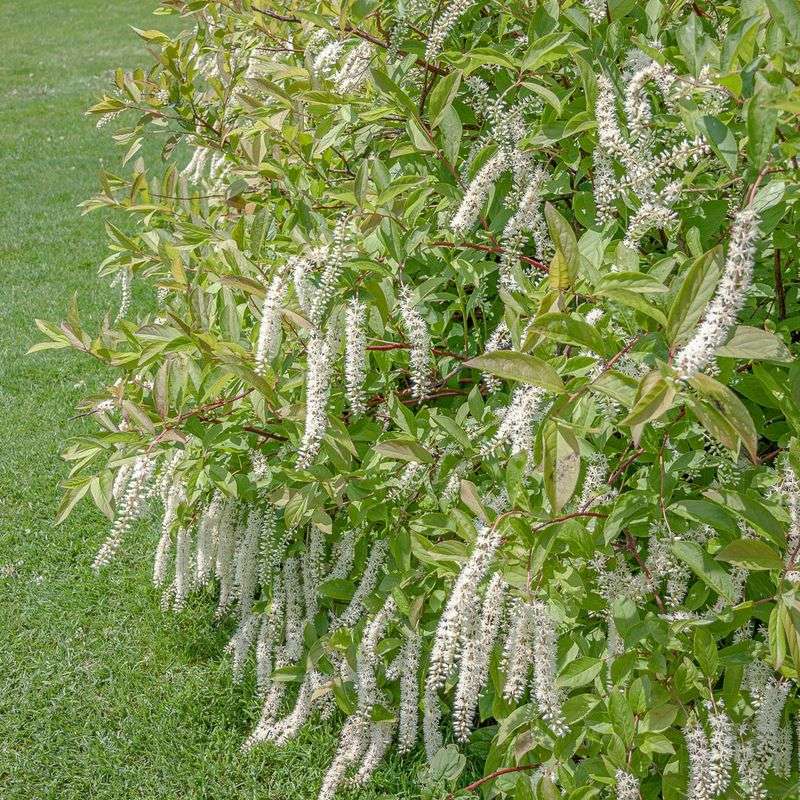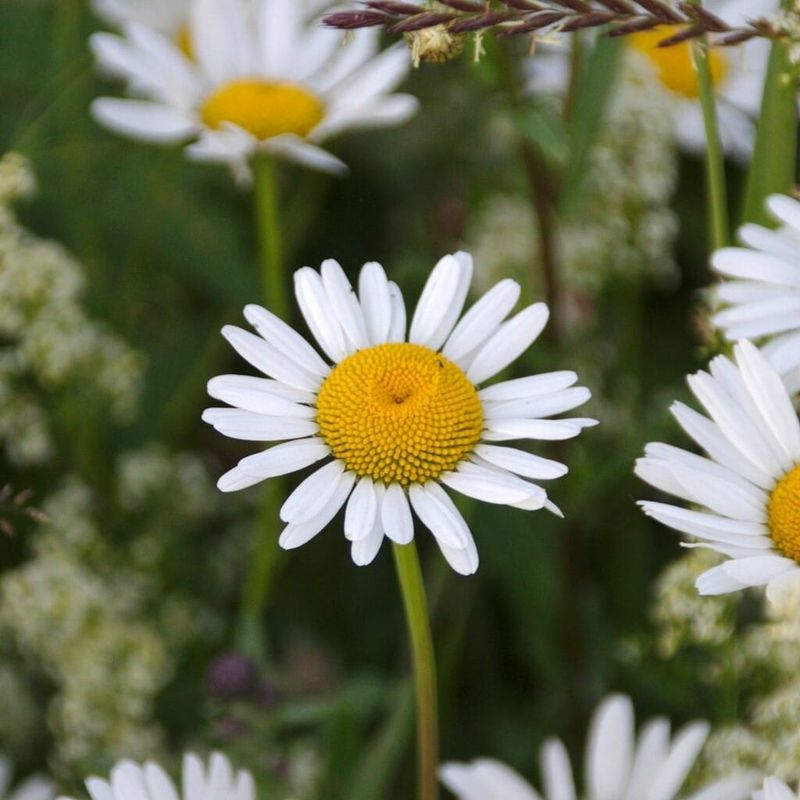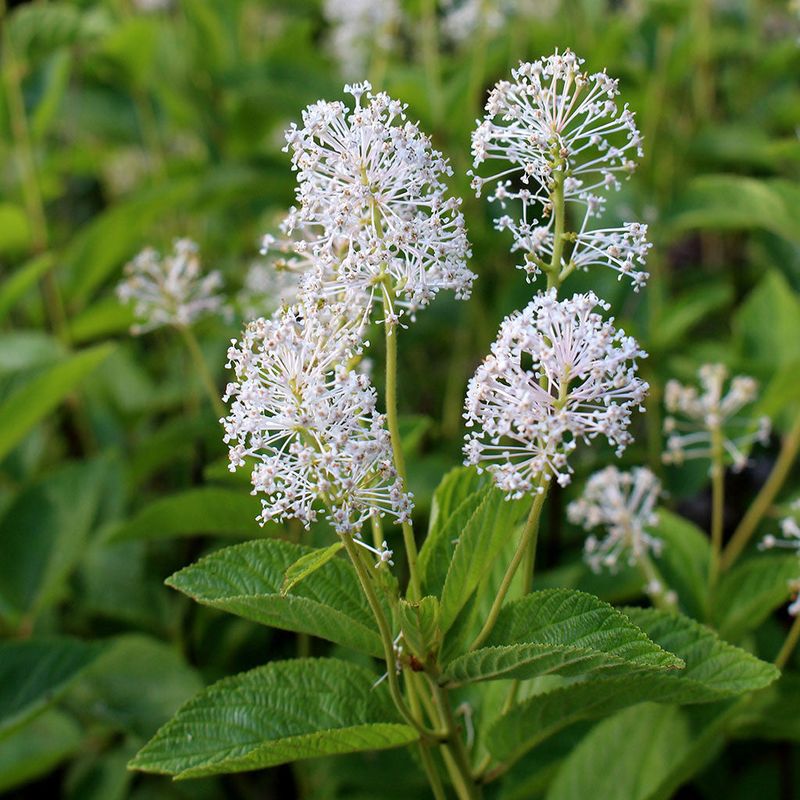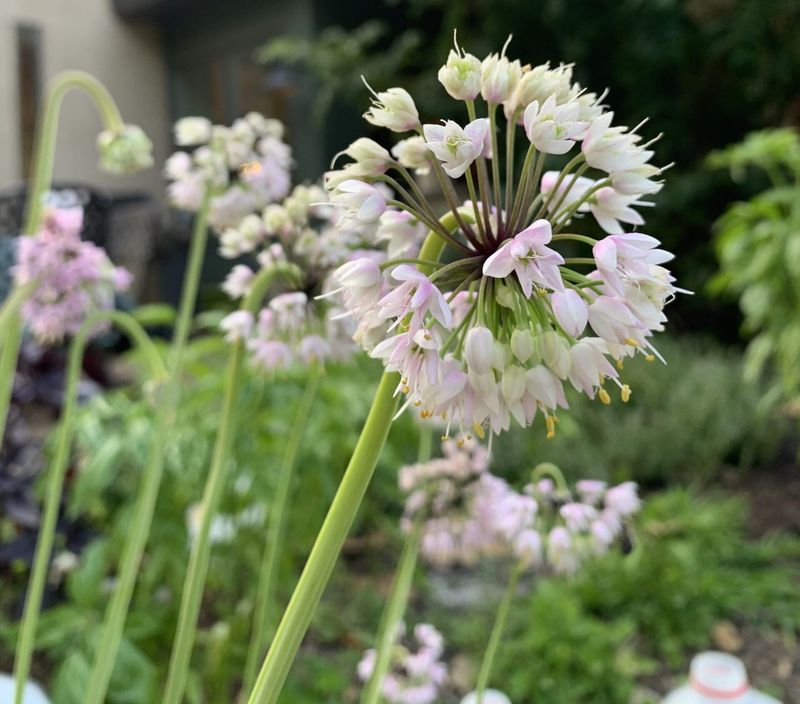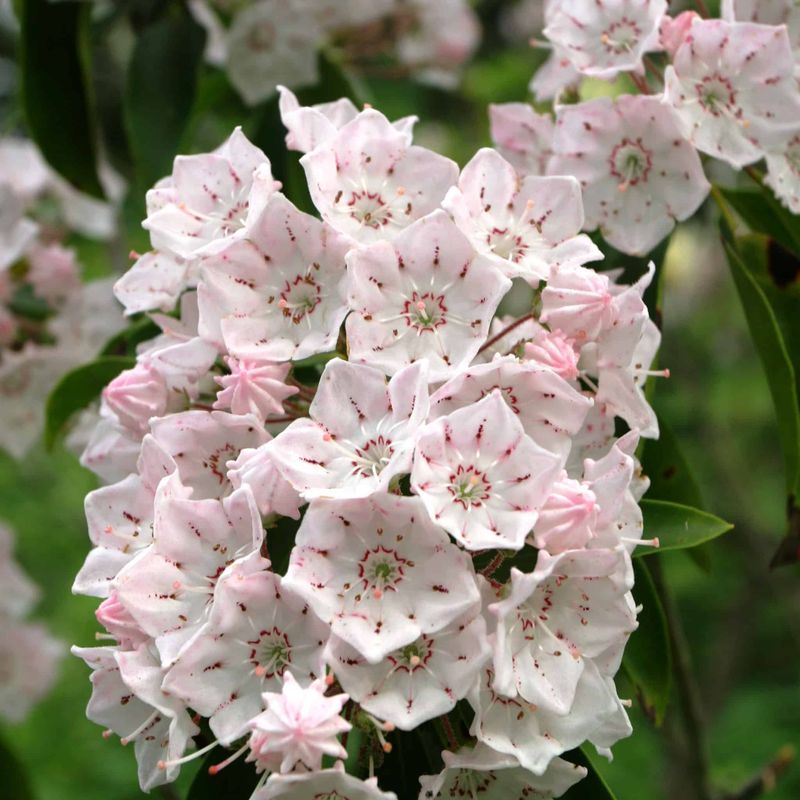White flowers bring elegance and a sense of purity to any garden. Their subtle yet striking presence captivates and enchants, transforming outdoor spaces into serene sanctuaries.
Discover 17 stunning native white flowers that promise to make your garden glow like magic.
1. White Trillium (Trillium grandiflorum)
White Trillium, also known as Trillium grandiflorum, marks the arrival of spring in woodlands with its signature three-petaled blooms. The flower’s pure white hue stands out against its lush green backdrop, creating a harmonious visual delight.
Each petal is perfectly shaped, forming a symmetrical masterpiece that embodies simplicity and grace. Often found in shaded areas, White Trillium thrives in damp, well-drained soil, making it a perfect addition to woodland gardens.
Its beauty not only captivates humans but also attracts pollinators, ensuring the continuation of its lineage.
A symbol of purity and renewal, White Trillium transforms any shaded garden into a serene escape. Its enduring elegance and low-maintenance nature make it a favorite among garden enthusiasts.
2. Bloodroot (Sanguinaria canadensis)
Bloodroot, scientifically known as Sanguinaria canadensis, is an enchanting early bloomer that heralds the arrival of spring. Its delicate white petals open wide, revealing a golden center that attracts pollinators like bees and butterflies.
The flower’s unique lobed leaves unfurl as it blooms, adding an extra layer of visual interest. Bloodroot thrives in woodland settings, preferring moist, well-drained soil and dappled sunlight.
It’s a remarkable plant not just for its beauty but also for its resilience, surviving harsh conditions with grace. Gardeners appreciate Bloodroot for its minimal care requirements, making it a superb choice for nature-inspired landscapes.
Its ethereal presence and dainty blooms bring a touch of magic to any garden space.
3. White Coneflower (Echinacea purpurea ‘White Swan’)
White Coneflower, or Echinacea purpurea ‘White Swan’, is a stunning daisy-like flower that graces gardens with its elegant presence. Its white petals radiate from a central cone, creating a striking contrast that captures attention.
Known for attracting pollinators, this flower brings bees and butterflies into your garden, adding life and movement. White Coneflower is highly adaptable, thriving in various conditions, from full sun to partial shade.
It prefers well-drained soil and requires minimal maintenance, making it ideal for gardeners seeking beauty with ease. Beyond its captivating appearance, the flower is known for its medicinal properties, often used in herbal remedies.
With its timeless charm and versatility, White Coneflower is a treasured addition to any garden.
4. Evening Primrose (Oenothera speciosa ‘White’)
Evening Primrose, scientifically known as Oenothera speciosa ‘White’, adds a captivating touch to gardens with its fragrant blooms that open at night. The flower’s white petals glow under the moonlight, transforming garden spaces into ethereal landscapes.
Its enchanting scent attracts nighttime pollinators, such as moths and certain species of bees, ensuring its propagation. Evening Primrose thrives in sunny areas with well-drained soil, making it a versatile addition to various garden styles.
This resilient plant requires little maintenance, providing beauty without demanding much attention.
Gardeners adore its ability to create a romantic, serene atmosphere, making evening strolls a sensory delight. Its graceful presence and nocturnal charm make Evening Primrose a true garden treasure.
5. Snowdrop (Galanthus nivalis)
Snowdrop, known scientifically as Galanthus nivalis, is one of the earliest bloomers, often peeking through the melting snow to signal the arrival of spring.
Its delicate white flowers, resembling tiny bells, nod gently in the breeze, offering a graceful and elegant display. Snowdrops thrive in cool, shaded areas with moist, well-drained soil, making them suitable for woodland gardens or borders.
Their understated beauty captivates onlookers and provides a gentle reminder of nature’s resilience. These flowers require minimal care, allowing gardeners to enjoy their beauty without much effort.
Snowdrops also serve as a naturalizing plant, spreading over time to form beautiful drifts. Their pure white blooms, coupled with their early appearance, make them a cherished addition to any garden.
6. Buttonbush (Cephalanthus occidentalis)
Buttonbush, or Cephalanthus occidentalis, is a unique flowering shrub known for its distinctive spherical blooms. Each white flower cluster resembles a miniature firework, capturing the imagination with its unusual form.
This plant thrives in wetland areas, preferring moist, rich soil and full to partial sunlight. Buttonbush is not only a visual delight but also a haven for wildlife, attracting bees, butterflies, and even hummingbirds to its nectar-rich blooms.
Its dense foliage provides shelter for various creatures, making it an ecological asset to garden spaces. Gardeners appreciate its hardiness and ability to withstand flooding, earning its place in rain gardens and along pond edges.
With its captivating blooms and environmental benefits, Buttonbush is a must-have for nature-friendly gardens.
7. Goat’s Beard (Aruncus dioicus)
Goat’s Beard, known botanically as Aruncus dioicus, brings a touch of elegance and softness to any garden with its feathery plumes. Each plume consists of countless tiny white flowers, creating a dreamy, cloud-like effect that enhances any landscape.
This plant thrives in moist, fertile soil and can adapt to various light conditions, from full sun to shade. Goat’s Beard is relatively low-maintenance, requiring only occasional watering and pruning to maintain its shape and health.
Its tall stature makes it an excellent choice for borders or as a backdrop in garden beds. The soft, ethereal presence of Goat’s Beard adds a magical quality to garden spaces, making it a favorite among gardeners seeking a serene and captivating landscape.
8. Wild Strawberry (Fragaria virginiana)
Wild Strawberry, scientifically named Fragaria virginiana, is a delightful addition to gardens, offering both ornamental and edible value. Its small white flowers, with bright yellow centers, appear in spring, adding a delicate charm to the landscape.
These flowers give way to sweet, juicy strawberries that attract birds and small mammals. Wild Strawberry thrives in well-drained soil and sunny locations but can tolerate partial shade.
It’s a low-maintenance plant, making it ideal for ground covers and borders. Gardeners appreciate its ability to spread naturally, providing a lush green carpet interspersed with fruit.
Besides its visual appeal, Wild Strawberry offers the joy of harvesting fresh berries, adding a practical touch to its ornamental beauty. It’s a versatile plant that enhances any garden with its charm and utility.
9. Yarrow (Achillea millefolium ‘White’)
Yarrow, or Achillea millefolium ‘White’, is a hardy native plant known for its clusters of tiny white flowers. These blooms form flat-topped clusters that add texture and interest to garden landscapes.
Yarrow thrives in dry, well-drained soil and full sun, making it perfect for rock gardens or xeriscaping. Its drought tolerance and minimal maintenance needs make it a favorite among gardeners seeking sustainability.
Beyond its visual appeal, Yarrow is valued for its medicinal properties, traditionally used to treat various ailments. It also attracts beneficial insects, enhancing garden biodiversity.
With its elegant blooms and robust nature, Yarrow is a versatile plant that brings both beauty and practicality to gardens. Its adaptability and ecological benefits make it a treasured choice for many.
10. Dutchman’s Breeches (Dicentra cucullaria)
Dutchman’s Breeches, scientifically known as Dicentra cucullaria, is a whimsical woodland flower that adds charm with its uniquely shaped blooms.
The white flowers resemble tiny pantaloons, hanging delicately from arching stems, creating a playful and enchanting display. Dutchman’s Breeches thrive in shaded, moist environments with rich, well-drained soil, making them perfect for woodland or rock gardens.
This perennial is relatively low-maintenance, requiring minimal care once established. Its blooms are not only visually appealing but also attract early spring pollinators, contributing to garden biodiversity.
Gardeners love its quirky appearance and the touch of whimsy it brings to garden spaces. Dutchman’s Breeches offers a delightful and distinctive addition to any shade garden, captivating all who encounter its unique charm.
11. Virginia Sweetspire (Itea virginica)
Virginia Sweetspire, known botanically as Itea virginica, enchants with its graceful, elongated spikes of white flowers. These blooms attract a variety of pollinators, making it a beneficial addition to any garden ecosystem.
Virginia Sweetspire thrives in moist, well-drained soil and can adapt to both sunny and partially shaded areas. Its lush, green foliage provides a stunning contrast to its white blooms, and in fall, the leaves transform into a fiery display of reds and oranges, adding seasonal interest.
This shrub is low-maintenance, requiring minimal pruning and care. Its ability to thrive in wet conditions makes it a great choice for rain gardens or near water features.
With its charming flowers and vibrant fall foliage, Virginia Sweetspire offers year-round beauty and ecological benefits.
12. Oxeye Daisy (Leucanthemum vulgare)
Oxeye Daisy, scientifically known as Leucanthemum vulgare, is a cheerful native flower that brings a touch of nostalgia to gardens with its classic daisy appearance. Its white petals surround a bright yellow center, creating a simple yet eye-catching contrast.
This hardy plant thrives in various conditions, from full sun to partial shade, and prefers well-drained soil. Oxeye Daisy is low-maintenance and can tolerate drought, making it ideal for wildflower meadows and cottage gardens.
Its blooms attract pollinators, contributing to garden biodiversity. Gardeners appreciate its ability to naturalize, spreading over time to create charming drifts.
Beyond its beauty, Oxeye Daisy is also used in traditional herbal remedies. Its timeless appeal and adaptability make it a beloved choice for garden enthusiasts.
13. Carolina Silverbell (Halesia carolina)
Carolina Silverbell, or Halesia carolina, is a small deciduous tree that adds elegance with its bell-shaped white flowers. These delicate blooms hang gracefully from branches, creating a serene and calming effect in spring gardens.
Carolina Silverbell thrives in well-drained, acidic soil and prefers partial shade, making it ideal for woodland gardens or as a specimen tree.
Its lush green leaves provide a beautiful backdrop to its white blooms, and in fall, the foliage turns a lovely yellow, offering seasonal interest. This tree requires minimal maintenance, with occasional pruning to maintain its shape.
Gardeners appreciate its graceful form and the tranquility it brings to garden spaces. Carolina Silverbell’s elegant blooms and charming presence make it a valued addition to any landscape, enchanting all who encounter it.
14. Wild White Indigo (Baptisia alba)
Wild White Indigo, scientifically named Baptisia alba, is a striking perennial known for its tall spikes of white flowers. These elegant blooms rise above lush green foliage, adding height and drama to garden landscapes.
Wild White Indigo thrives in well-drained soil and full sun, making it perfect for borders or as a focal point in perennial gardens. This plant is drought-tolerant and requires minimal care once established, appealing to gardeners seeking low-maintenance beauty.
Beyond its visual appeal, Wild White Indigo is beneficial for attracting pollinators, enhancing garden biodiversity. Its robust nature and elegant form make it a standout choice for any garden.
With its towering blooms and ability to thrive in challenging conditions, Wild White Indigo adds a touch of elegance and resilience to outdoor spaces.
15. New Jersey Tea (Ceanothus americanus)
New Jersey Tea, known scientifically as Ceanothus americanus, is a compact shrub prized for its fluffy white flowers. These blooms attract a variety of pollinators, including butterflies and hummingbirds, bringing life and movement to garden spaces.
New Jersey Tea thrives in well-drained soil and full sun, making it a versatile choice for borders or as a foundation plant. Its ability to fix nitrogen enriches the soil, benefiting surrounding plants.
This shrub is drought-tolerant and requires minimal maintenance, appealing to gardeners seeking sustainability. Beyond its ecological benefits, New Jersey Tea offers visual appeal with its dense foliage and charming flowers.
Gardeners appreciate its low-maintenance nature and the vibrant wildlife it attracts. With its attractive blooms and environmental advantages, New Jersey Tea enhances both the beauty and health of garden ecosystems.
16. Nodding Onion (Allium cernuum ‘White’)
Nodding Onion, or Allium cernuum ‘White’, is a graceful wildflower known for its clusters of drooping white blossoms. These bell-shaped blooms nod gently, adding a whimsical touch to gardens.
Nodding Onion thrives in well-drained soil and full sun, making it suitable for rock gardens or border edges. This plant is drought-tolerant and requires minimal care, appealing to gardeners seeking low-maintenance options.
Its flowers attract a variety of pollinators, enhancing garden biodiversity. Beyond its visual appeal, Nodding Onion is also edible, with its leaves and bulbs used in culinary applications.
Gardeners appreciate its versatility and the gentle charm it brings to garden spaces. With its unique form and practical uses, Nodding Onion is a delightful addition to any garden.
17. Mountain Laurel (Kalmia latifolia ‘White’)
Mountain Laurel, scientifically known as Kalmia latifolia ‘White’, is a stunning evergreen shrub that captivates with its delicate star-shaped flowers. These white blooms appear in late spring, creating an elegant display against the shrub’s lush green foliage.
Mountain Laurel thrives in well-drained, acidic soil and prefers partial shade, making it perfect for woodland gardens or as a focal point in shrub borders. This plant requires minimal care, with occasional pruning to maintain its shape and health.
Gardeners prize its ability to thrive in challenging conditions and its evergreen nature, providing year-round interest.
Mountain Laurel’s enchanting blooms and robust form make it a cherished addition to garden landscapes. Its captivating presence and low-maintenance needs make it a favorite among garden enthusiasts.
